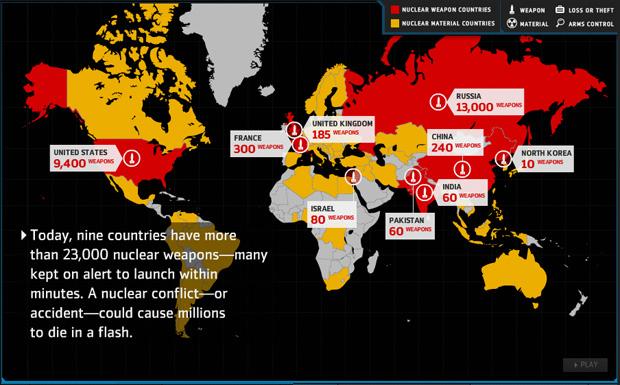
But this is not the whole story. The majority of the world has already shown us the solution to the problem of nuclear weapons - by rejecting them. Many countries have gone down the nuclear weapons path then turned back, realising that they do not increase their security.
Since the end of the Cold War, South Africa has unilaterally dismantled its nuclear weapons, and Ukraine, Belarus and Kazakhstan have all rejected the weapons they inherited from the Soviet Union. Sweden, Brazil, Argentina, Taiwan and Libya also decided to abandon their programmes to develop nuclear weapons.
Over the past 30 years we’ve reduced the number of nukes globally by 70 per cent. Today we have a real opportunity to create, step by step, a more peaceful world.
Defence and security experts from around the globe now agree that a ban on nuclear weapons is achievable and have put together a comprehensive roadmap for global disarmament. President Obama is backing the plan and as a first step is working with the Russians to drastically reduce the vast US and Russian nuclear arsenals.
The disarmament roadmap
Decades of research and negotiations have given us a clear roadmap to a world free the world of nuclear weapons. All the essential steps – from banning weapons materials to monitoring to ensure nations don't cheat the system – are clear. What's needed is concerted pressure on countries to start putting the roadmap into action. And pressure is now building on them to get their act together.
Global Zero
In 2008 100 leaders from around the world launched the Global Zero plan for the phased, verified elimination of nuclear weapons, right down to a global zero. The growing group includes former heads of state, former foreign ministers, former defence ministers, former national security advisors, and more than 20 former top military commanders. Explore the Global Zero animated map.
Nuclear Security Project
Similarly ex-Cold War warrior Henry Kissinger, and other former senior US ministers surprised the world when in 2007 they wrote a joint editorial in the Wall Street Journal calling for action to cut nuclear weapons. They have since launched the Nuclear Security Project to 'galvanize global support for and action on the vision of a world free of nuclear weapons and the urgent steps needed to reach that goal'.
Watch the NSP's film: Nuclear Tipping Point.


